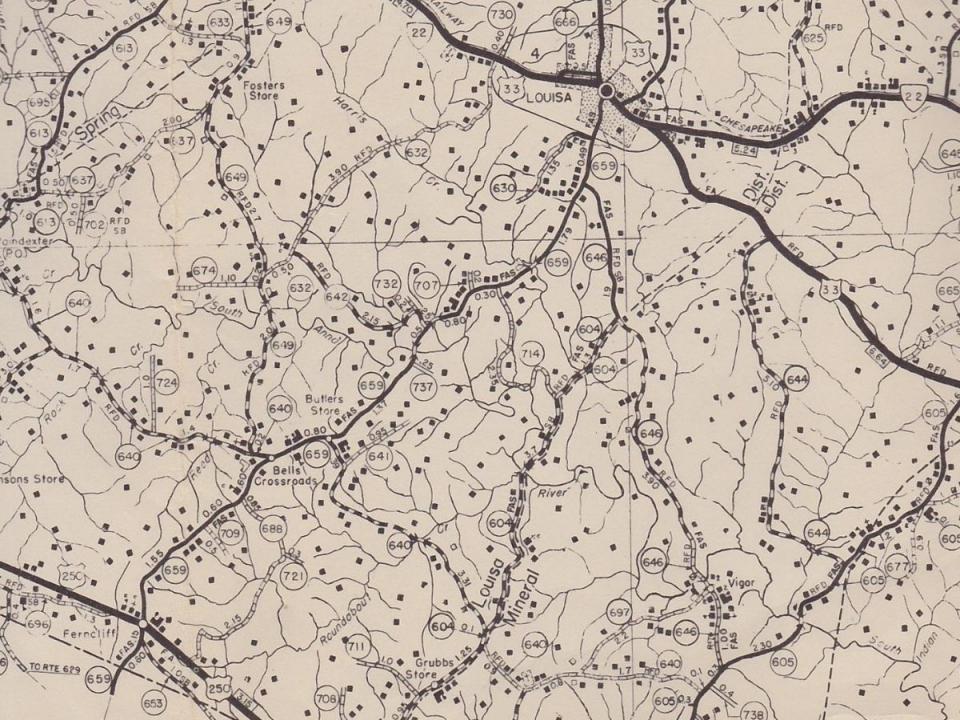History, Agriculture in 1950s Louisa County
The 1950s were a time of immense change for the people of Louisa County and the country as a whole. Like many rural areas of the United States, the people of Louisa County were still heavily dependent on farming as the main source of both income and food as compared to more urban areas of Virginia. In 1954, eighty-four percent of the farms in Louisa County harvested vegetables for home consumption in addition to selling them. Farming was so prevalent in the county that it was said that, “everything in Louisa depends on the farmer.”
While agriculture was the economic backbone of Louisa during the 1950s, it often did not bring a large amount of income for local families. When comparing the living conditions between Louisa County and other areas of the state, it is evident that Louisa County had fewer amenities. In 1950 only 31% of households in the county had indoor running water, 59% had electric lights, and 20% had indoor plumbing. Despite the lack of amenities, the people of Louisa County embraced the hardships and came up with innovative ideas to make up for the difference. When Homer Robinson Jr. was growing up his house did not have a refrigerator so his family would “…take buttermilk down to the spring, put a string around the top of the jar, set them down in the water, tie it and let it float right there…”
It was common for everybody in a household to be involved in agricultural and farm work during the 1950s, even children. Children to have a variety of chores that needed to be completed before and after school including milking cows, feeding animals, picking vegetables, and even slaughtering hogs.
In the mid-1950s the agricultural landscape of Louisa began to change. During that time federal subsidies and the emergence of mechanization caused a decline in small, single-family farms in favor of large, industrial operators. Throughout the 1950s the number of small farms in Louisa County decreased, while the use and ownership of equipment such as tractors, combines, and bailers increased. As was reflected in the rest of the country, this emergence of large, corporate farms drove many families to leave agriculture in search of work in other industries, especially African American farmers.
Despite the decline in farming seen during the late 1950s, agriculture still remains an important aspect of many families lives in modern times. As of 2017, there are 431 active farms in Louisa, covering a combined total of over 68,000 acres. Of these farms, 95% of them are still family-owned.

